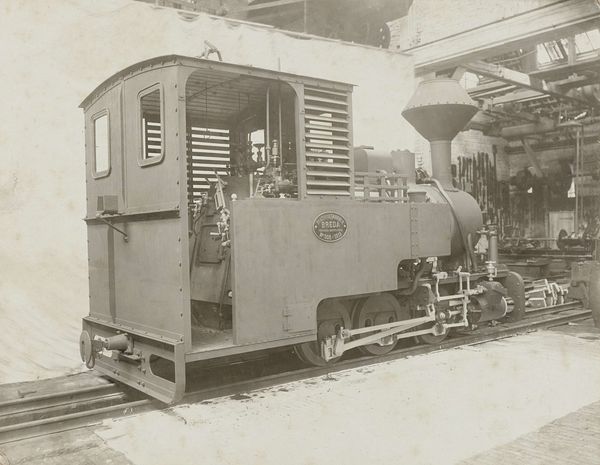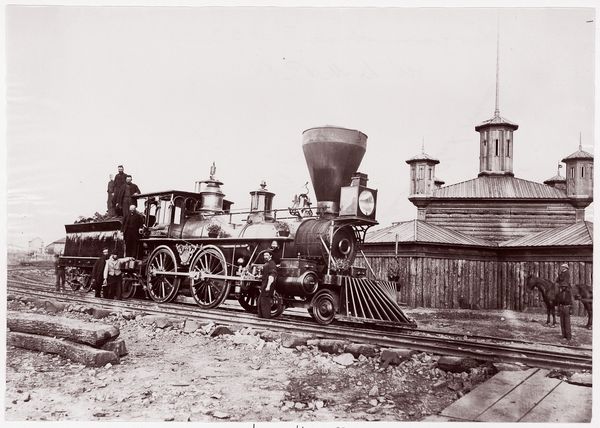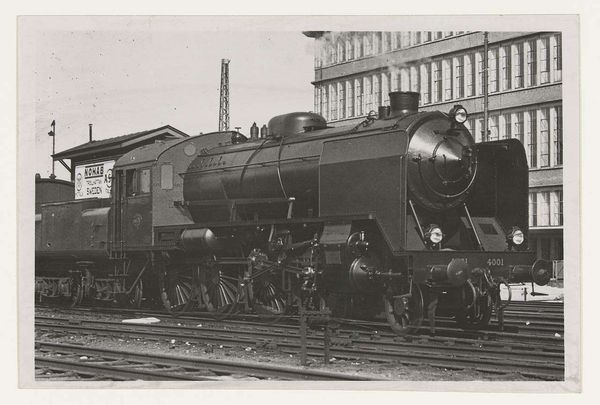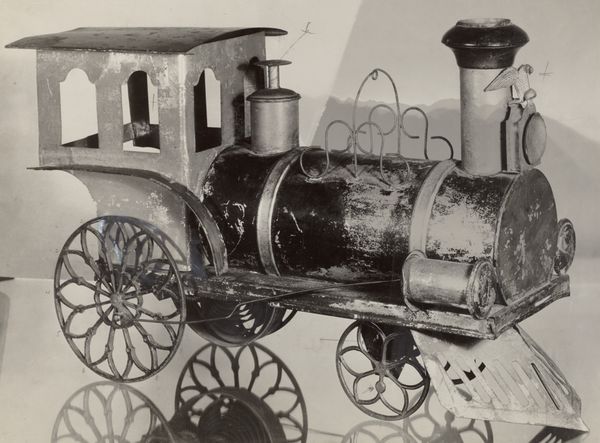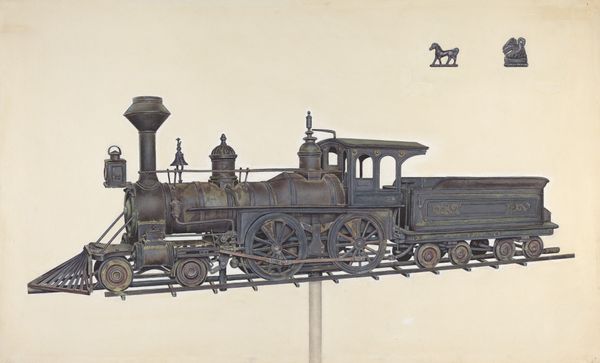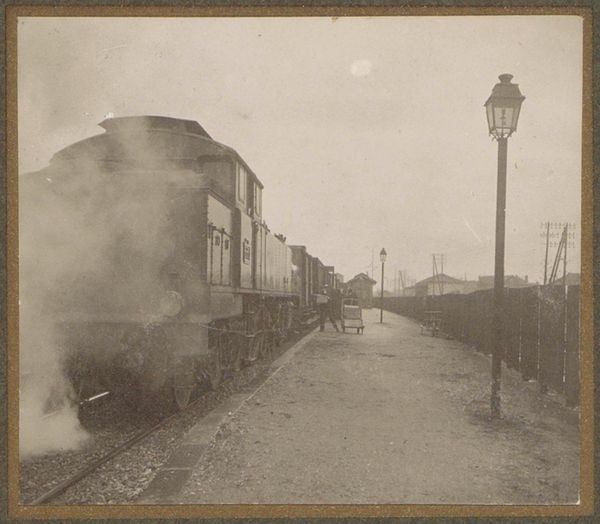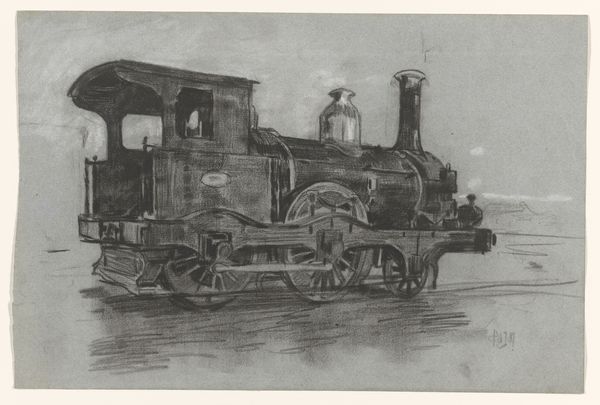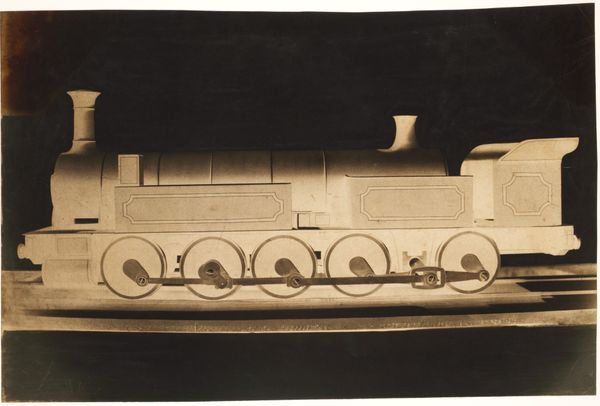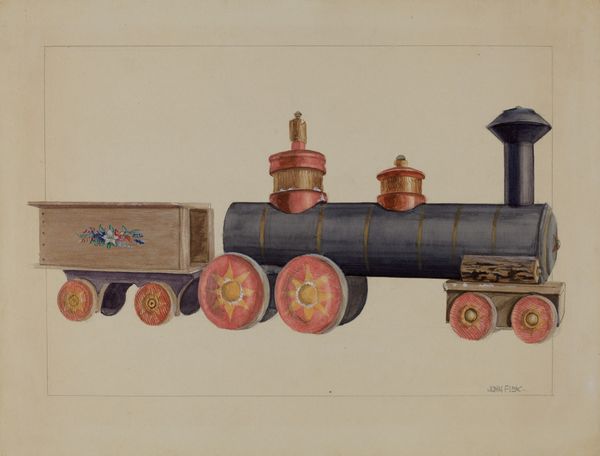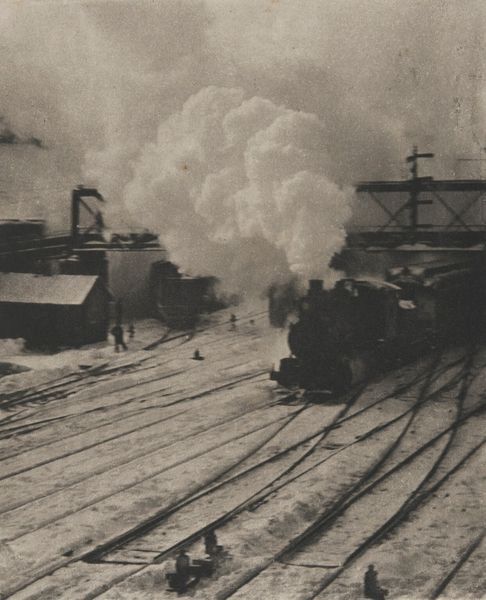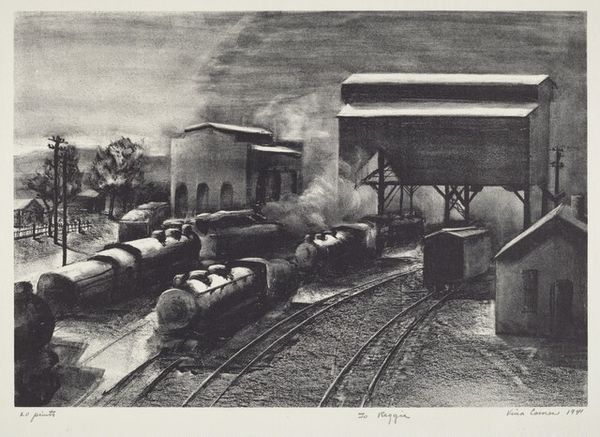
print, photography
#
still-life-photography
# print
#
charcoal drawing
#
photography
Dimensions: height 150 mm, width 218 mm
Copyright: Rijks Museum: Open Domain
Curator: Look at this stunning sepia photograph. It is titled, "Een suikerlocomotief van de Nederlandsch-Indische Spoorwegen," and likely taken between the 1900s and 1910s. The image is a striking documentation of a sugar locomotive from the Dutch East Indies Railway. Editor: My first thought? Melancholy. The locomotive looks almost ghostly in this faded light. It gives the machine a kind of stoic presence as though it’s aware its age. The intricate mechanical details contrasted with that soft sepia… It’s like seeing a memory materialize. Curator: Exactly, it does trigger a memory! Think of the context: sugar production in the Dutch East Indies, a major colonial enterprise built upon industry and exploited labor. Photography like this doesn't just document, it participates in the colonial project. What interests me is how this single print invites one to consider production. Consider that it might not only include photography, but possibly also charcoal rendering to give the impression of heightened reality to the picture, since AI has detected the drawing medium along with photography as possibilities. Editor: Right. Beyond the romance of the "still life" photographic genre and beyond charcoal's unique way of playing with texture and light to underscore the machine’s impressive design, we are staring at the sinews of colonial commerce. It wasn’t just a machine; it was a vector for extracting and moving resources and reinforcing hierarchies. Every pipe, wheel, and valve tells that story in metallic detail. Curator: I love that tension, the beauty in form masking a more complicated story of power and production. It makes you consider what other truths it conceals. This seemingly objective image holds layers of human ambition, ingenuity, and their implications. It calls for our responsibility, and care, in how we process this artifact from the past. Editor: Ultimately, that’s the pull of this print for me— the beautiful stillness that compels us to examine the churning machinery of history itself. The fact that it looks almost futuristic considering its age proves, once again, that certain tools survive our stories longer than us.
Comments
No comments
Be the first to comment and join the conversation on the ultimate creative platform.

